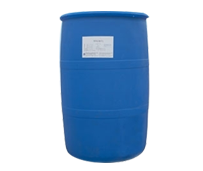Surfactants are amphiphilic substances which can significantly reduce the surface tension of solvents and have special adsorption properties. It has a strong adsorption performance and a series of properties such as emulsification, lubrication, penetration, dispersion, solubilization, foaming, defoaming and washing. It is an important chemical additive in the development of all walks of life. Its advantages are small consumption and large harvest.

Asphalt pavement is the main type of road surface in China, and crack collapse is the main disease of asphalt pavement. With the growth of service time, the pavement will have different degrees of collapse crack phenomenon. The main reason of this kind of disease may be that the compactness of subgrade and pavement is insufficient or the mixture is not uniform. Of course, asphalt aging is also an important reason for asphalt pavement to form cracks.
Rutting is a kind of strip groove produced by the repeated action of vehicle load, which is one of the special damage phenomena of asphalt pavement. Generally, there are three types of ruts: structural rutting, liquidity rutting and rutting caused by compaction of asphalt in construction.
When the vehicle rolls the pavement for a long time, some bumps will appear on the surface of the pavement. Coupled with the damage of water, it is difficult for the water to continue to infiltrate after entering the road surface layer. The water is immersed in the interface between the aggregate and the asphalt, thus reducing the adhesion between the aggregate and the asphalt. Under the repeated load of vehicles, the extrusion and kneading of tires on the pavement increases the stripping speed of aggregate and asphalt, so the asphalt pavement surface begins to deform and damage, which brings inconvenience to the passing vehicles. In addition, the strength and stability of subgrade is also the basic condition to ensure the strength and stability of pavement.
Loose is due to the loss of aggregate particles in the surface layer of asphalt concrete and the loss of adhesion between aggregate particles and asphalt, resulting in surface spalling, peeling and small holes. The main reasons for the looseness are: a large amount of dust envelops the aggregate particles, which makes the cohesion between the aggregate particles and the asphalt film decrease; the abrasion of the asphalt film on the pavement causes the aggregate particles to fall off; along with the aging of the asphalt, the cohesion between the asphalt and the aggregate is weakened, and the looseness will also occur.
If heat tracing asphalt is used in road construction, the asphalt is usually heated to above 140 ℃ and reheated after transportation. If the construction is stopped due to failure or accident, the asphalt must be heated and kept warm. Even the used sand and gravel must be dried and heated to 160 ℃. Therefore, the temperature of the construction site is very high, and it is very difficult for the staff to avoid burning and fire danger when they are working in a smoky environment Safety hazards, especially asphalt and sand stone materials, emit a large amount of toxic waste gas and dust during heating and drying, which seriously affect the health of construction personnel.